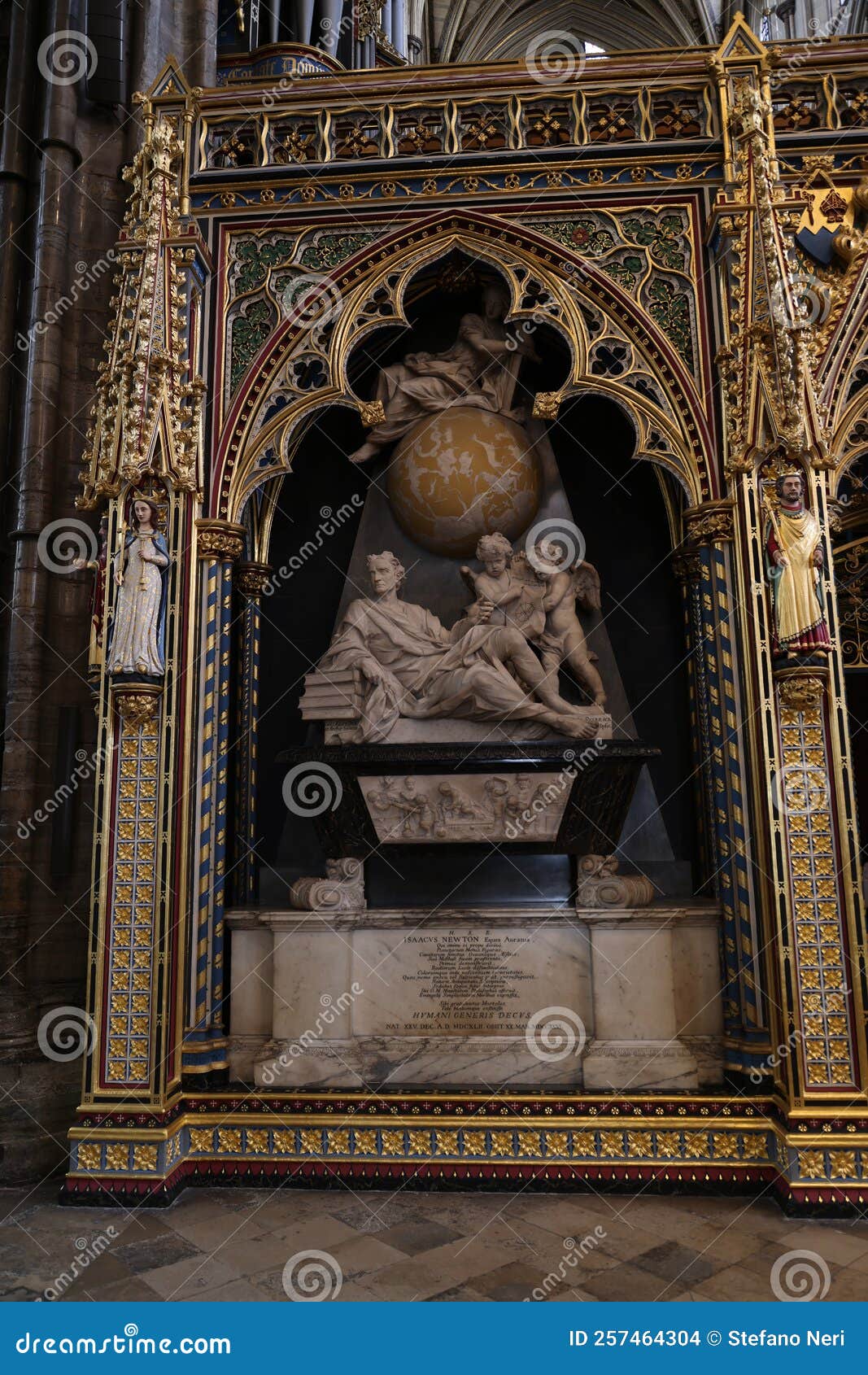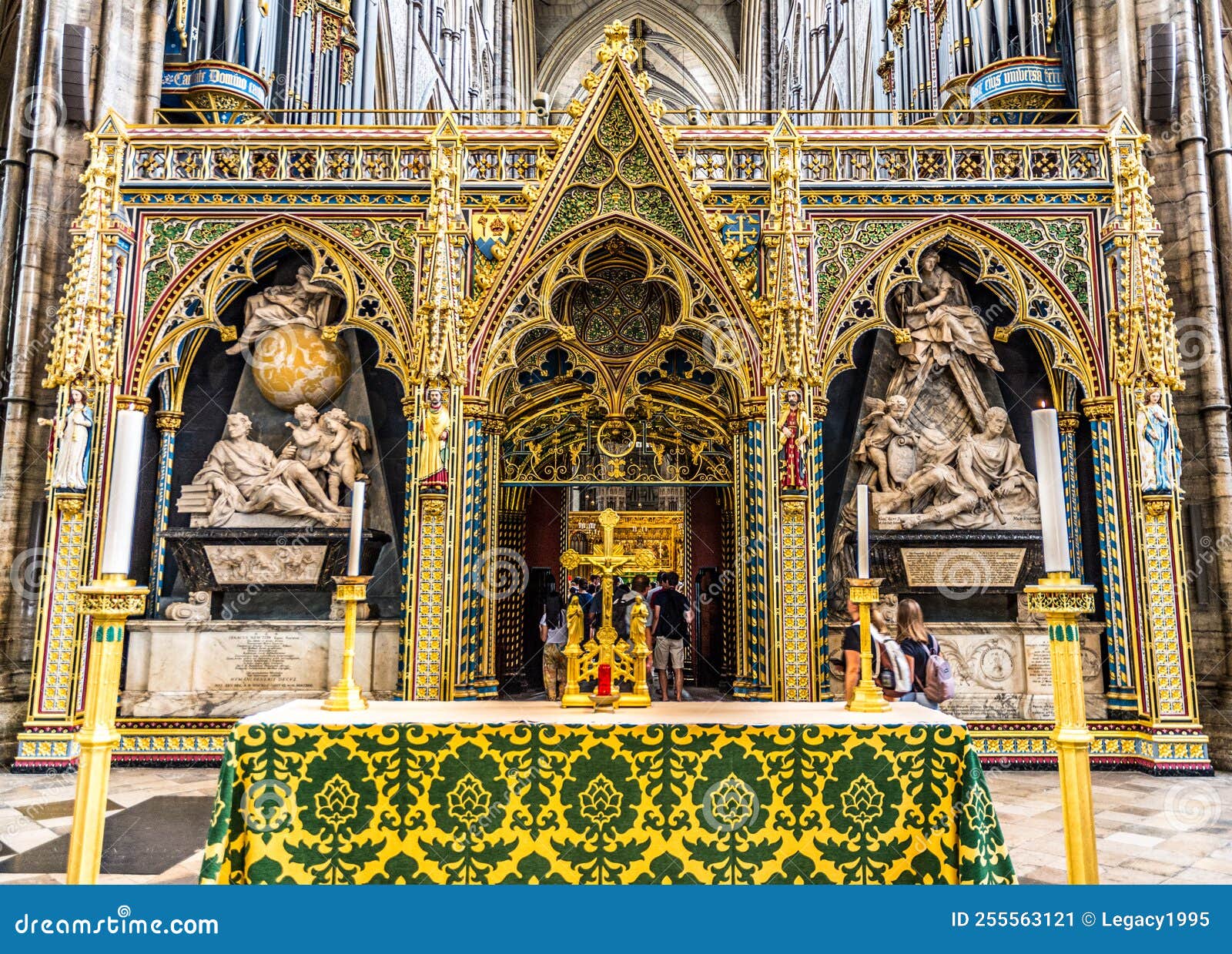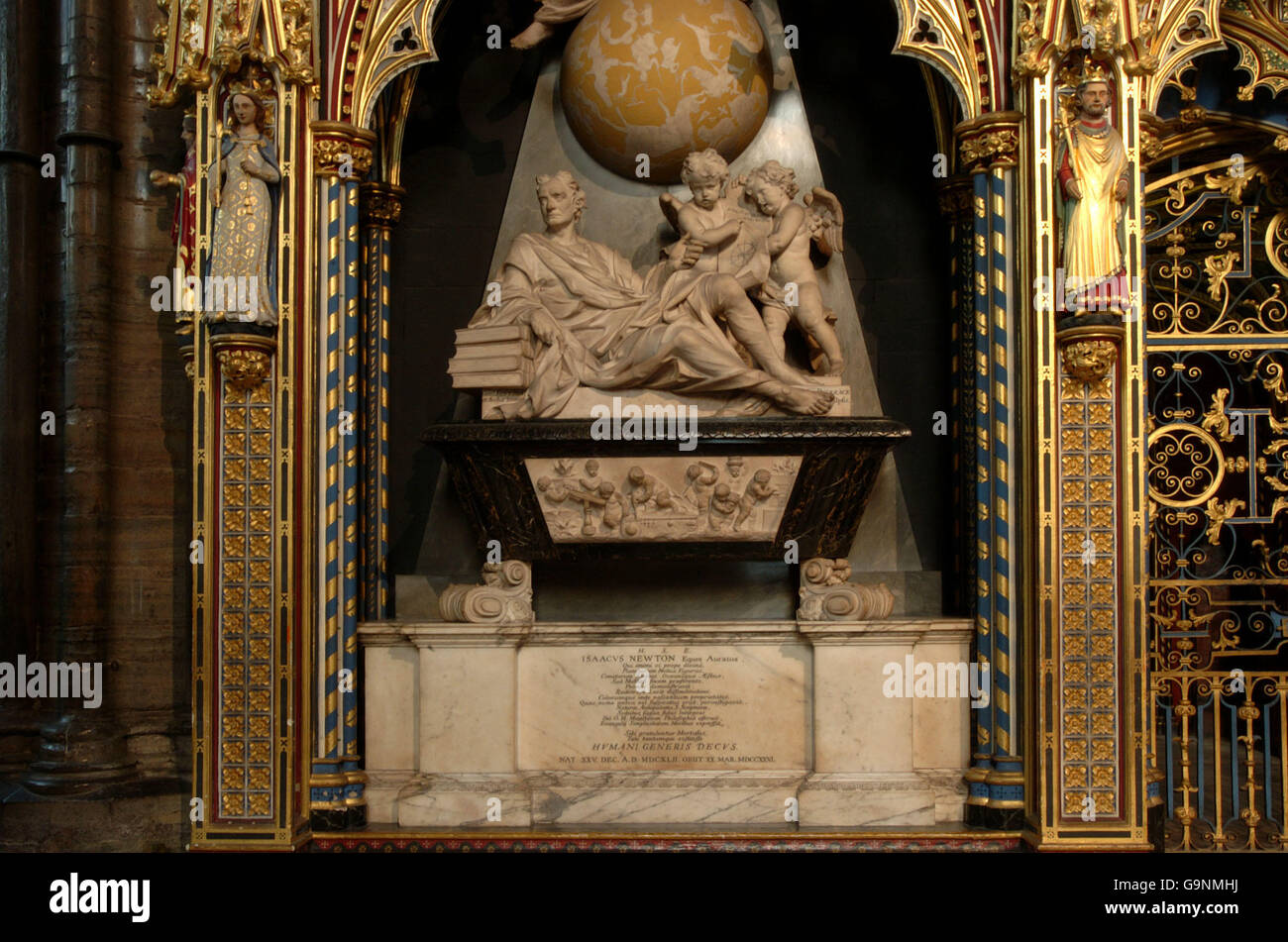Isaac Newton's Tomb - A Place Of Wonder
Stepping into a place where a true giant of thought rests can be a rather moving experience, you know? It's like you're standing on ground that holds so much history, so much quiet reflection. When we think about the people who truly changed how we see the universe, someone like Isaac Newton certainly comes to mind. His final resting spot is a place that draws visitors from all walks of life, eager to connect with the memory of a mind that shaped so much of what we now understand about the world around us. It's a spot that, in some respects, feels almost sacred to those who appreciate deep thinking.
There's a particular feeling you get when you are near the memorial of someone whose ideas continue to shape our daily existence. It is not just about a stone structure; it is about the lingering presence of profound discoveries and a way of looking at things that was, quite frankly, revolutionary. This particular location, which holds the remains of Isaac Newton, offers a moment to pause and consider the vast reach of human intellect and curiosity. You can almost feel the weight of all those big thoughts in the air, a very subtle hum of genius.
For anyone curious about the figures who helped build our modern scientific perspective, visiting such a memorial becomes a significant act. It is a chance to pay respects, of course, but also to perhaps find a little bit of inspiration. This article will help you get a better sense of what makes Isaac Newton's tomb such an important stop for many, exploring the individual himself and the enduring impact of his contributions. We will also, you know, touch upon how names like "Isaac" can appear in different stories across time.
Table of Contents
- Who Was Isaac Newton?
- What Makes Isaac Newton's Tomb So Special?
- The Legacy Beyond Isaac Newton's Tomb
- How Do We Remember Great Minds Like Isaac Newton?
- The Name "Isaac" - A Shared Thread?
- Visiting Isaac Newton's Tomb - A Quiet Reflection
- Where Can You Find Isaac Newton's Tomb?
- More Than Just a Resting Place
Who Was Isaac Newton?
When you hear the name Isaac Newton, it is almost certain that pictures of falling apples, gravity, and grand scientific principles come to mind. He was, to put it simply, a truly brilliant thinker who lived a good while ago, during the 17th and early 18th centuries. His work really did set the stage for much of modern physics and mathematics. He was a person who asked big questions about how things work in the universe and then, you know, went about finding answers that changed everything. His ideas about motion and gravity, for instance, gave us a whole new way to understand why planets move the way they do and why things fall to the ground. He also developed a new kind of mathematics, which is pretty amazing when you think about it.
His contributions were so sweeping, so fundamental, that they still shape our basic understanding of the physical world. He was a quiet, rather intense person, some would say, who spent a great deal of his time pondering deep concepts. The story of his life is one of relentless intellectual pursuit, and his discoveries continue to be taught and built upon in schools and universities all over the planet. It is quite something to consider that one person could have such a lasting effect on human knowledge, is that not so?
Personal Details
| Detail | Information |
|---|---|
| Full Name | Sir Isaac Newton |
| Born | December 25, 1642 (Old Style) / January 4, 1643 (New Style) |
| Died | March 31, 1727 |
| Nationality | English |
| Known For | Laws of Motion, Universal Gravitation, Calculus, Optics |
| Burial Place | Westminster Abbey, London |
What Makes Isaac Newton's Tomb So Special?
Walking up to Isaac Newton's tomb, you might feel a sense of quiet respect, a bit like visiting a grand library filled with ancient wisdom. It is not just a simple stone slab; it is a monument that speaks to the enormous impact of the person resting beneath it. The artistry of the memorial itself is quite something to behold, often featuring symbolic elements that represent his scientific achievements. People come here not just to see a burial site, but to experience a tangible connection to a mind that truly reshaped our view of the cosmos. It is a place where history feels very much alive, almost within reach.
The quiet atmosphere around Isaac Newton's tomb allows for a moment of personal reflection. You might find yourself thinking about how one person's dedication to discovery can change the course of human progress. It is a spot that seems to whisper stories of inquiry and insight. For many, it serves as a powerful reminder of the human capacity for brilliance and the enduring power of ideas. You know, it is pretty remarkable how a place like this can hold so much meaning for so many people, even centuries later.
The Legacy Beyond Isaac Newton's Tomb
The real legacy of Isaac Newton, you could say, goes far beyond the stone of his tomb. His ideas, his way of thinking about the universe, they live on in every physics classroom, every space mission, every time someone calculates how something will move. It is like his mind is still at work, influencing the very way we build and understand the world. His contributions are so fundamental that they are woven into the fabric of modern science, almost like the invisible threads that hold everything together. This is a person whose thoughts truly crossed generations, affecting so many aspects of our lives without us even realizing it sometimes.
Think about it: the principles he laid out are the very foundations upon which so much of our technological world is built. From designing bridges to sending satellites into orbit, his work provides the basic rules. So, while his physical resting place is a significant landmark, his true monument is the vast expanse of scientific understanding that continues to grow from the seeds he planted. It is a powerful example of how intellectual work can have an enduring, you know, truly global reach.
How Do We Remember Great Minds Like Isaac Newton?
We remember great minds like Isaac Newton in many ways, of course. There are the books, the lectures, the scientific papers that keep his ideas alive. But there are also places like Isaac Newton's tomb, which serve as physical reminders, as points of pilgrimage for those who admire his genius. These kinds of memorials are important because they give us a tangible connection to the past, a spot where we can literally stand in the presence of history. They help us to honor the people who pushed the boundaries of what was known, and they remind us of the power of human curiosity and intellect. It is a way of keeping their spirit, you know, very much present in our collective memory.
Beyond the physical sites, we remember these figures through the stories we tell about them, the anecdotes that capture their character or their moments of breakthrough. These stories, whether they are about an apple falling or a flash of insight, help to humanize these intellectual giants and make their achievements feel more accessible. It is a way of ensuring that their contributions are not just dry facts in a textbook, but living narratives that continue to inspire future generations. We keep their memory alive by sharing their tales, and really, that is a pretty wonderful thing.
The Name "Isaac" - A Shared Thread?
It is rather interesting how names can carry so much weight and appear in such different, yet equally significant, stories across time. The name "Isaac," for instance, brings to mind not only the renowned scientist we have been discussing but also a very different, deeply resonant figure from ancient texts. You know, the name itself seems to have a certain gravity. In "My text," there is a powerful narrative about an Isaac who kneels in front of an altar, with a servant nearby and a ram at the left, which Abraham will sacrifice in Isaac’s place. This is, in fact, one of the most powerful narratives in the Hebrew Bible, a story that has been read and portrayed differently by Jews and Christians for nearly 2,000 years. It speaks to themes of faith, obedience, and divine intervention, and it has a long tradition of Jewish interpretation, as seen in Genesis 22. It is a tale that, in some respects, has shaped belief systems for countless people.
The "My text" also touches upon other biblical stories that feature the name "Isaac" or related figures, such as Jacob wrestling with someone in Genesis 32, or the moment an angel cries out to Abraham to stay his hand, and a ram is caught by its horns in a thicket and sacrificed instead of Isaac. There are mentions of how Adele Berlin discusses the story of Ruth and its illumination of the main theme of the Hebrew Bible – the continuity of God’s people in their land. It also brings up mosaics reflecting the zodiac in ancient synagogues, and questions about how December 25 came to be Christmas, or if Akhenaten's monotheism influenced Moses. These are all threads of deep historical and religious narratives, very much distinct from the scientific legacy of Isaac Newton, yet they share that very same name, "Isaac."
Is There a Connection Between These "Isaacs"?
When we think about these two very different "Isaacs," one a foundational figure in religious history and the other a cornerstone of scientific thought, it is fair to wonder if there is any real connection beyond the shared name. The truth is, there is no direct link between the biblical Isaac and Sir Isaac Newton in terms of their lives or their work. They existed in completely different eras and contributed to vastly different areas of human knowledge. Yet, the coincidence of the name can make us pause and consider how certain names carry a weight, a sense of destiny, perhaps, even if the individuals are unrelated. It is a curious thing, really, how language and naming conventions work across centuries and cultures.
Perhaps the only connection, if you could call it that, lies in the enduring impact both figures have had on human thought and culture. The biblical Isaac is central to narratives that have shaped spiritual beliefs for millennia, while Sir Isaac Newton’s ideas underpin our understanding of the physical universe. Both, in their own unique ways, represent profound shifts in how humanity perceives its place in the grand scheme of things. So, while their stories are separate, their shared name serves as a tiny, almost poetic, echo across the vast stretches of human history. It is a reminder that names can sometimes carry, you know, a very long and varied journey through time.
Visiting Isaac Newton's Tomb - A Quiet Reflection
For those who make the trip to see Isaac Newton's tomb, the experience is often one of quiet contemplation. It is a chance to stand where a truly remarkable individual was laid to rest, surrounded by the echoes of centuries of thought and discovery. You are not just looking at a monument; you are feeling the weight of history, a place where the past feels very much present. The atmosphere encourages a moment of personal reflection on the nature of genius, the pursuit of knowledge, and the lasting influence one person can have on the world. It is a subtle invitation to think big thoughts, just as Newton himself did, really.
Many visitors report feeling a sense of awe, a quiet appreciation for the intellect that once resided in the person buried there. It is a spot that seems to inspire a deeper consideration of the scientific method and the power of observation. The very air around Isaac Newton's tomb seems to hum with the memory of groundbreaking ideas. It is a pilgrimage, in a way, for those who admire the human spirit's capacity for discovery and innovation. It is quite a powerful place, you know, for anyone with a curious mind.
Where Can You Find Isaac Newton's Tomb?
If you are thinking about visiting Isaac Newton's tomb, you will find it in a very famous and historic building in London. It is located within Westminster Abbey, a place that is, you know, pretty much steeped in centuries of British history and tradition. The Abbey itself is a truly grand structure, a magnificent example of architecture and a resting place for many other significant figures from British history, including monarchs, poets, and other great thinkers. Finding his memorial there is usually quite straightforward, as it is a prominent feature within the Abbey's nave. It is a place that draws many people, so you will likely be sharing the experience with others who also wish to pay their respects to this titan of science.
More Than Just a Resting Place
Ultimately, Isaac Newton's tomb is far more than just a place where a famous person is buried. It is a symbol, a focal point for remembering a mind that profoundly changed our understanding of the universe. It represents the enduring power of human intellect, the pursuit of truth, and the incredible impact that one individual's curiosity can have on the course of history. It serves as a quiet reminder that the discoveries made centuries ago continue to shape our present and guide our future. It is a place that, you know, really makes you think about the grand sweep of human progress.
It is a spot that invites us to consider the ongoing quest for knowledge, a journey that Isaac Newton himself championed with such vigor. The significance of his tomb lies not just in its physical presence, but in the way it connects us to a lineage of thinkers who have dared to ask big questions and seek profound answers. It is a powerful reminder that the human spirit of inquiry is something truly special and worth celebrating, in every sense of the word. It is a place that, in a way, encourages us to keep looking up, just as he did.
- Is Project X True Story
- Enter Sandman Guitar Tab
- %D8%B9%D8%A7%D8%A8%D8%B1%D8%A8%D8%A7%D9%86%DA%A9 %D9%85%D9%87%D8%B1 %D8%A7%DB%8C%D8%B1%D8%A7%D9%86
- Where Is Pen%C3%A9lope Cruz From
- Prosecutor Oj Simpson

Isaac Newton S Tomb in Westminster Abbey, London Editorial Stock Image

Westminster Abbey Sir Isaac Newton`s Tomb in the Corner of the Left

Sir Isaac Newton Tomb